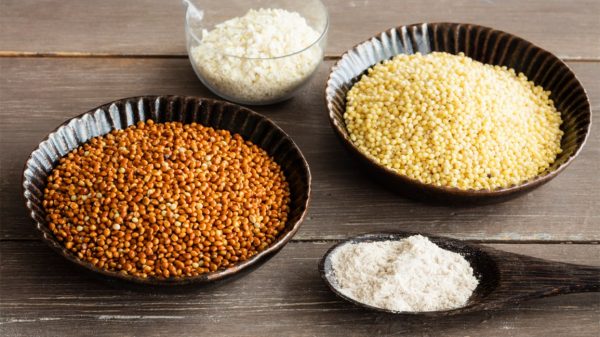Millet is widely available across northern Nigeria, where it’s used in a variety of food preparations. The pale yellow-brown cereal is harvested from a grass plant that grows in semi-arid regions. Much like cassava in the South, the crop is so commonly used that most locals don’t think much of its possible importance outside of their country.
Read more about Food
But Nigeria does have bragging rights connected to millet production. It has the fifth biggest output for the crop of any country in the world. The 1 million metric tonnes of millet it churns out every year is only exceeded by countries like India and China.
The top millet growing states in Nigeria are Borno, Kaduna, Kano, and Yobe. A lot of the cereal’s farming in this region is done by small scale farmers. Consumption is also largely limited to the northern states. The most widely cultivated variety of the crop in the region is the pearl millet. It’s fairly different from the types more commonly found in Asia and parts of northern Africa.
Traditionally, millet has served as an ingredient for the ‘kunu’ drink. It has also functioned as a substitute for wheat in the production of bread, as the latter isn’t always available. Another traditional meal, the millet porridge, owes its existence to this grain.
Because it is gluten-free, millet flour can replace wheat flour in baked products for people with gluten-sensitivity. The grain itself has found multiple uses among people elsewhere in the world. In North America, it’s an ingredient in seeded bread. But it’s also used as livestock feed.
Find our comprehensive listings of businesses in Nigeria here
Despite the huge amount of the cereal harvested every year in Nigeria, the country consumes virtually all its millet. This is thanks to a rapidly growing population and a less-than-commensurate increase in the production of the commodity.
Low productivity per hectare of land has also contributed to the apparent stagnancy in millet production. Nigeria’s yield is a fraction of the 0.83 tonnes per hectare that France manages every year.
Overall production of millet in Nigeria has fallen in the past decade or so. In 2008, the country produced a record 9 million metric tonnes of the grain. It was the world’s second-biggest producer of the crop and was running India close for the top spot.
Some of the factors that knocked Nigeria off its high perch may resurrect its millet growing capacities. Larger populations may mean higher demand for the produce. But as food habits and preferences change across the country, the old peaks of millet farming may remain unmatched for a very long while yet.
Featured image source: Health Line
Got a suggestion? Contact us: editor at connectnigeria dot com


